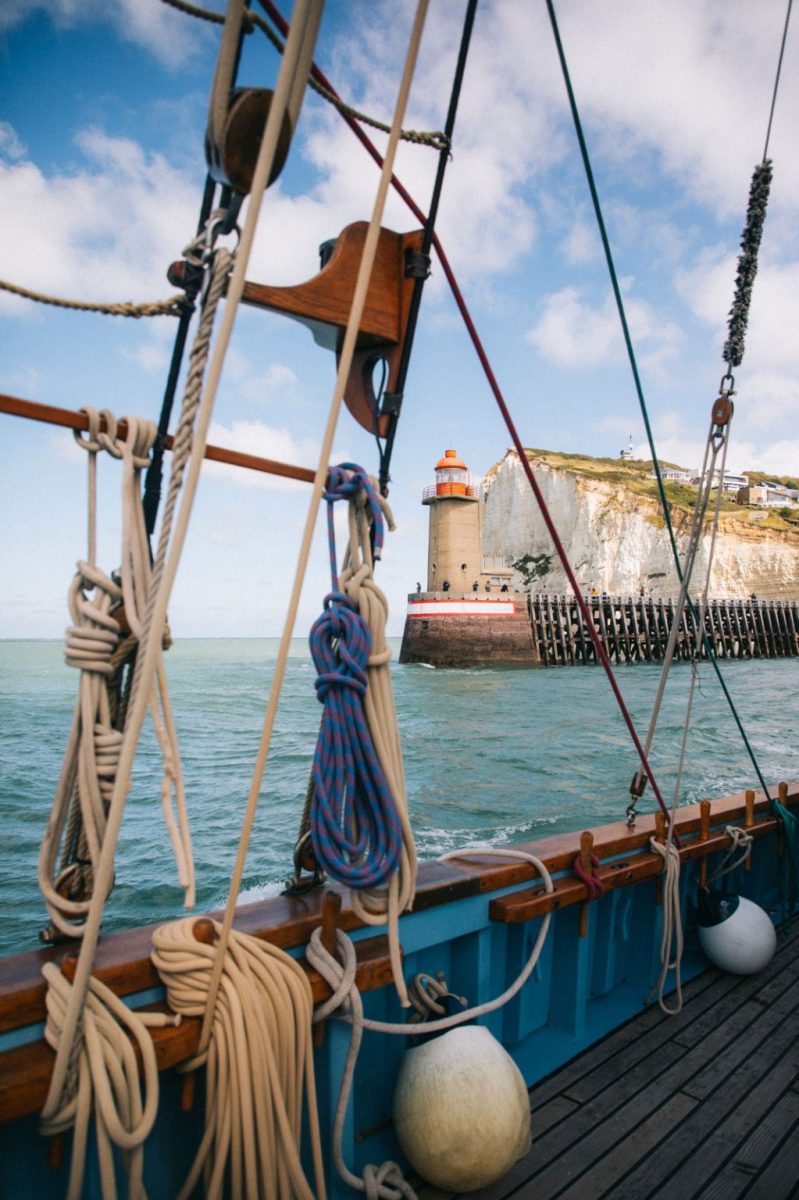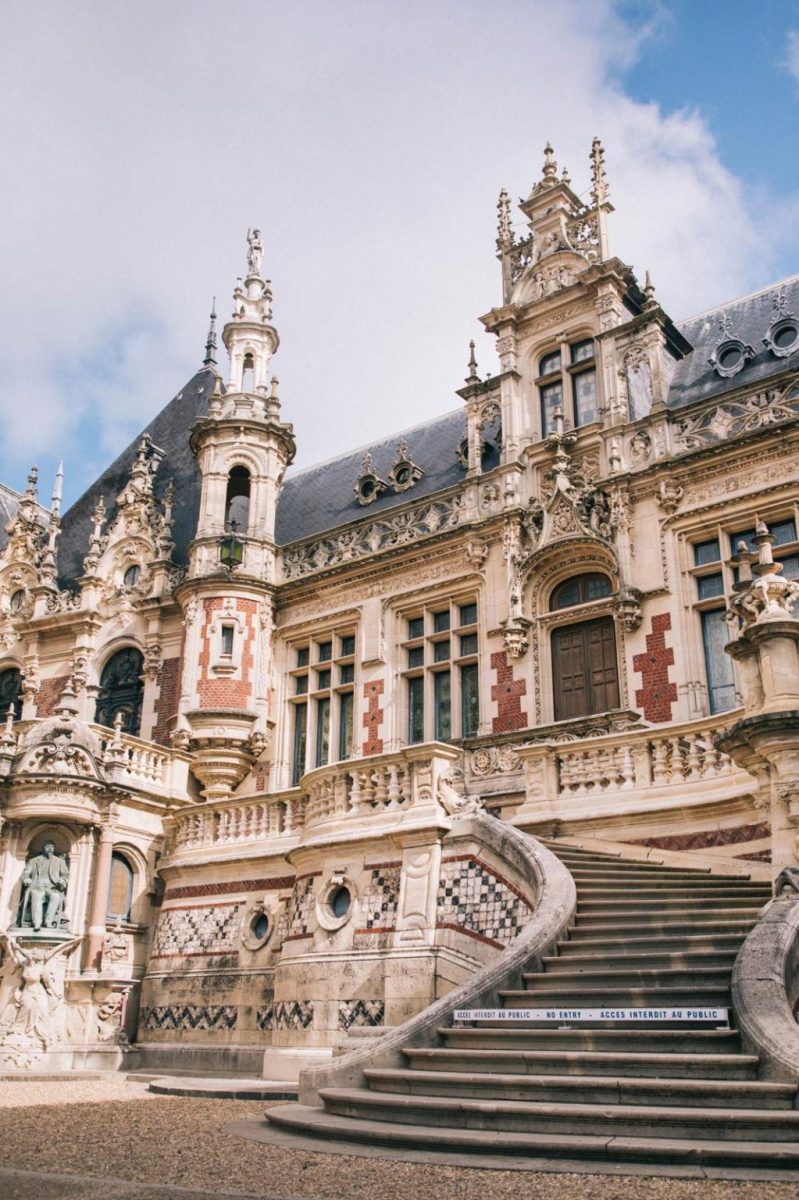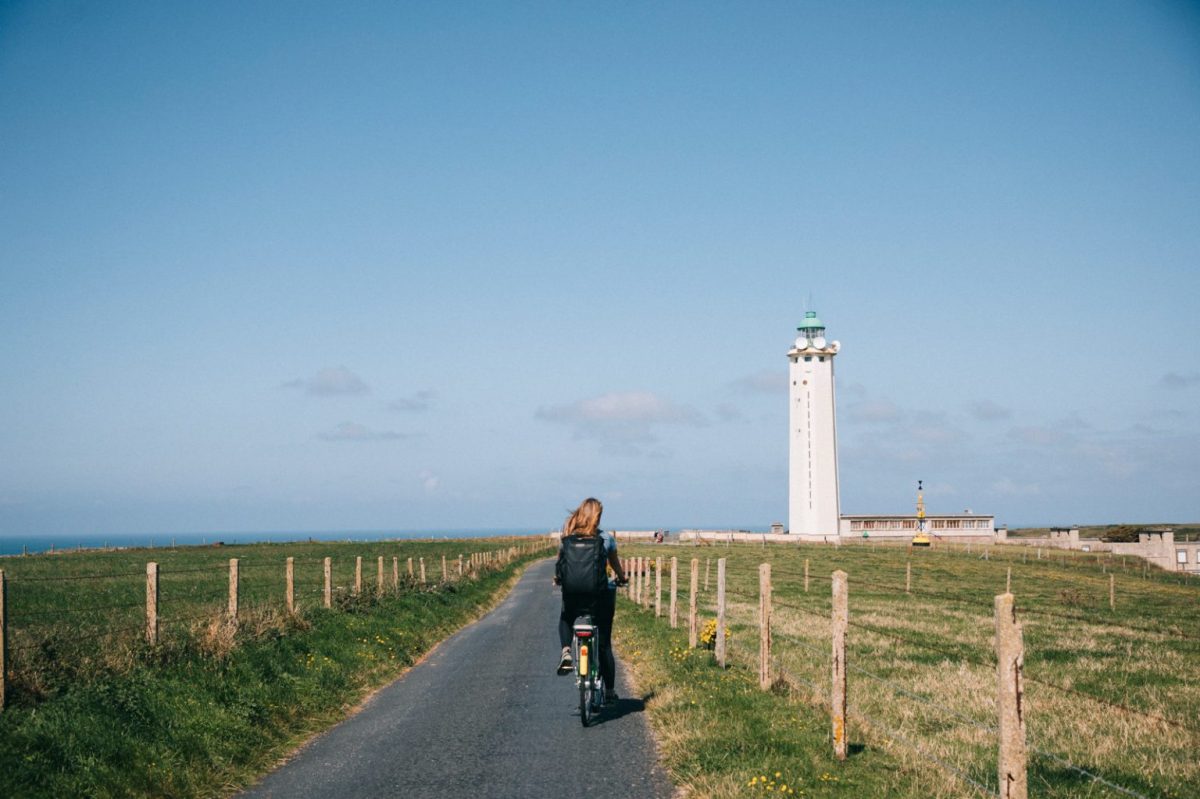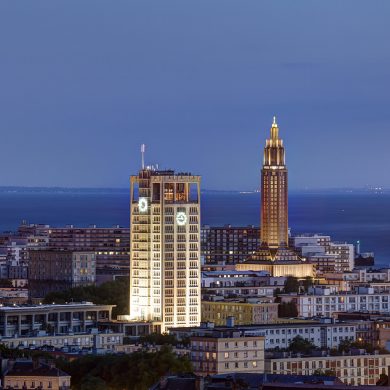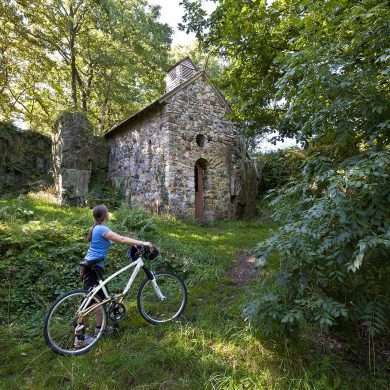Updated on 19 October 2022
Reading time: 5 minutes
To explore the 45 km of coastline between Le Havre and Fécamp, I set off on a slow adventure combining cycling and walking. Instead of breathlessly dashing from one sight to the next, I decide to ride my bicycle at my own pace along a section of the Vélomaritime® and then continue on the GR®21 hiking trail. Choosing active ways to explore this part of Normandy is to really experience its full beauty. It’s certainly the best way to reap the great rewards of discovery, history, culture, and awe! Follow my journey to uncover the essence of the Alabaster Coast, one step at a time.
The thrill of discovering Le Havre on two wheels
With the opening kilometers of my adventure hugging the shoreline of Le Havre, I get to ride through this unique city entirely rebuilt after the World War II bombings. This shining star of post-war reconstruction is now listed by UNESCO as a World Heritage Site. Cruising through this modern city on a bike is a great way to appreciate the distinct architecture of August Perret as well as impressive landmarks such as the Saint Joseph church. If you wander the city’s public spaces in the summer, you’ll discover art displays across the urban landscape, like the iconic UP#3 colossal radiant concrete frame rising from the pebbled beach. Pedaling towards the Vélomaritime® cycling route, I prepare for a full day’s riding and walking across an awe-inspiring backdrop in order to reach Etretat before sunset.


The VÉLOMARITIME® cycling route
This itinerary is a 1,500 km bicycle route that links Roscoff in Brittany to Dunkirk in the North of France, crossing Normandy. The Vélomaritime® route is easy to follow, signposted with blue and orange stickers. To prepare your cycling itinerary on this route, feel free to download the GPX track on applications such as Komoot.

Day 1: Quaint little villages of the Alabaster coast
Cycling along the Alabaster Coast means skimming through wonderful scenery and unspoiled villages that you might otherwise miss. Leaving the cycling path, I pedal towards the sea to find hidden gems such as the Antifer lighthouse, the World War II Memorial, and the village of Bruneval – before joining the Vélomaritime route inland. A bracing sea breeze, waves crashing against the cliffs, and soaring seabirds are just some of the reasons I love to cycle by the sea, truly appreciating Normandy’s natural beauty.
The Cliffs Of Etretat & the Needle Rock
Three hours later, I reach the coastal village of Étretat, renowned for its impressive white cliffs, arches and “rock needle”. This is where I’ll drop off my bike and continue my journey on foot along the GR®21 Cliff Trail (‘GR’ means “Grande Randonnée ) which runs along the entire coast. Visit off-season to fully appreciate the panoramic clifftop views as you’re guaranteed to find fewer crowds. Another tip to admire the beauty of these natural masterpieces: get up early! Spectacular sunrises are everyday occurrences and provide ideal photo opportunities of the amazing white cliffs of Etretat. You’ll find plenty of walking paths that crisscross the area, but I recommend staying with the GR®21 to enjoy all the incredible views.
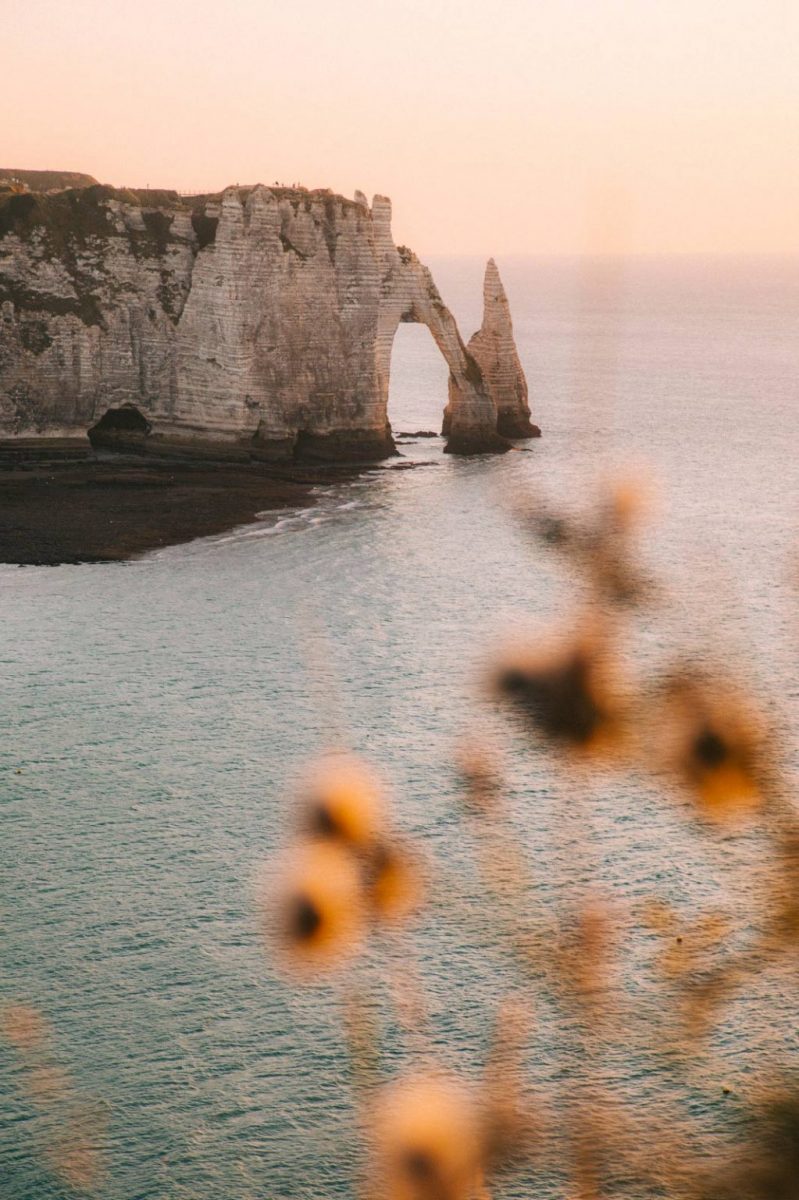
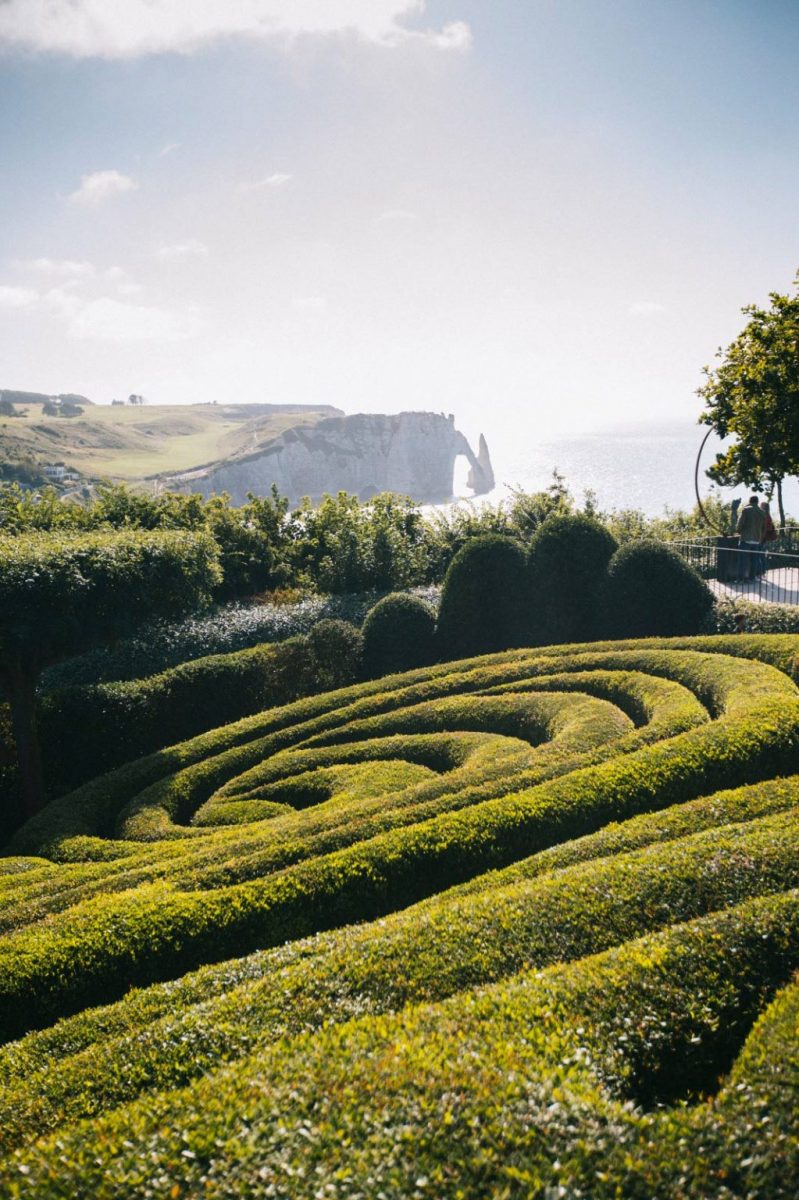
Day 2: The rugged wonders of the GR®21 walking trail
There’s nothing quite like lacing up your hiking boots and heading into the great outdoors after a good night’s sleep! Today, I’ll be hiking the remaining 21 km of my journey, heading towards the fishing town of Fécamp, my final destination. Although many people visit Etretat, fewer continue further, on the wild and remote cliff edge path. Yet, this dramatic, sea-sprayed walk has some of the finest cliff scenery in France! Tackling this route is certainly a challenge as you walk up and down through gorgeous valleys, but you’re definitely in for spectacular views from the hills, fascinating geology, a refreshing dose of fresh air, thought-clearing exercise and an unrivalled sense of freedom!
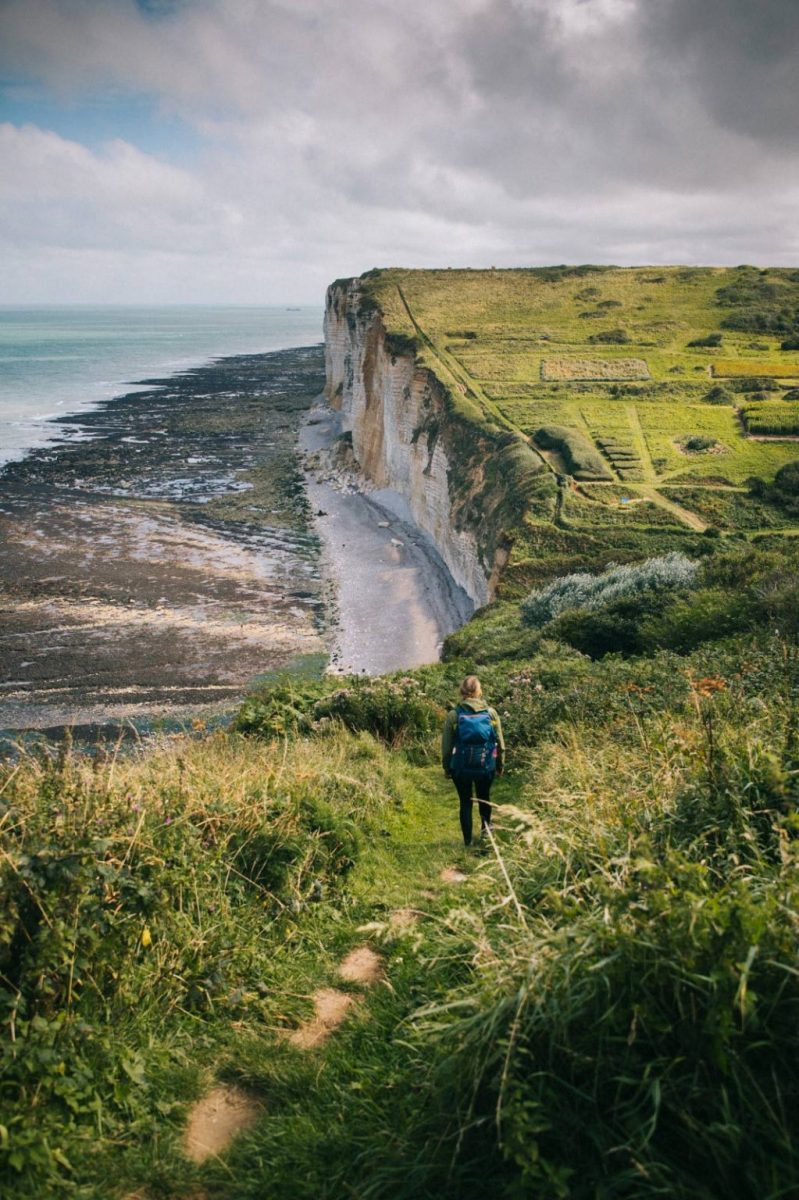

The GR®21 Hiking trail
The GR®21 is a 190 km long-distance hiking trail which parallels the coast of Seine Maritime from Le Tréport (next to the Baie de Somme) all the way to Le Havre. Recognized as one of the most scenic walking trails in the country, the GR21 runs along steep white chalk cliffs battered by the Channel seas and was voted as France’s favorite hike in 2019 in an annual competition organized by the French Hiking Federation. This coastal path is listed as “moderate” as the terrain involves some steady and steep inclines. It appeals to walkers of all levels, eager to discover some of Normandy’s most astonishing scenery and to fill their lungs with fresh seaside air!
Be careful, if you want to hike along the Alabaster Coast, never leave the marked trail to approach the edge of the cliff. The landscapes require the greatest caution.
The sleepy little village of Yport
Gorgeous fishing villages are emblematic of the Alabaster Coast. Sheltered in a quiet bay of its own, complete with its chalky cliffs and pebble beach, the seaside village of Yport is one of my favorite places. In summer, the blue and white striped beach huts by the water are incredibly photogenic. On the GR®21 journey, Yport is an ideal stop to find a nice restaurant serving the catch-of-the-day. You may choose to relax over a well-deserved cup of tea or coffee or, if like me you have a sweet tooth, indulge in a traditional pancake from Cabestan et sa plume, a local gourmet hotspot!
The fishing town of Fécamp
From a height, the undulating coastal path provides views of Fécamp nestled between two cliffs. The GR®21 leads to the waterfront promenade of the town, where my trip comes to its end. If your legs can hack it, the trail between le Havre and Fécamp takes some beating in the beauty stakes. As both cities are connected by train, I can easily travel back to le Havre with my bicycle on board. This perfect combination of cycle and rail journeys offers a reliable, low cost, time-efficient way to travel. Moreover, it is environmentally friendly, healthy and so enjoyable!
To make the most of Fécamp before heading back, I wish to soak up its general atmosphere, but also its history and heritage. This former herring fishing port boasts a wealth of local historical gems.Thus, I decide to embark on a traditional sailing boat to discover the town from a new angle. An experience I truly recommend ! To delve deeper into the legacy of Fécamp, I take some time to visit the mythical Benedictine Palace built in the 19th century to honor the area’s famous Bénédictine liqueur. One of the many architectural jewels of Normandy and open to the public!
